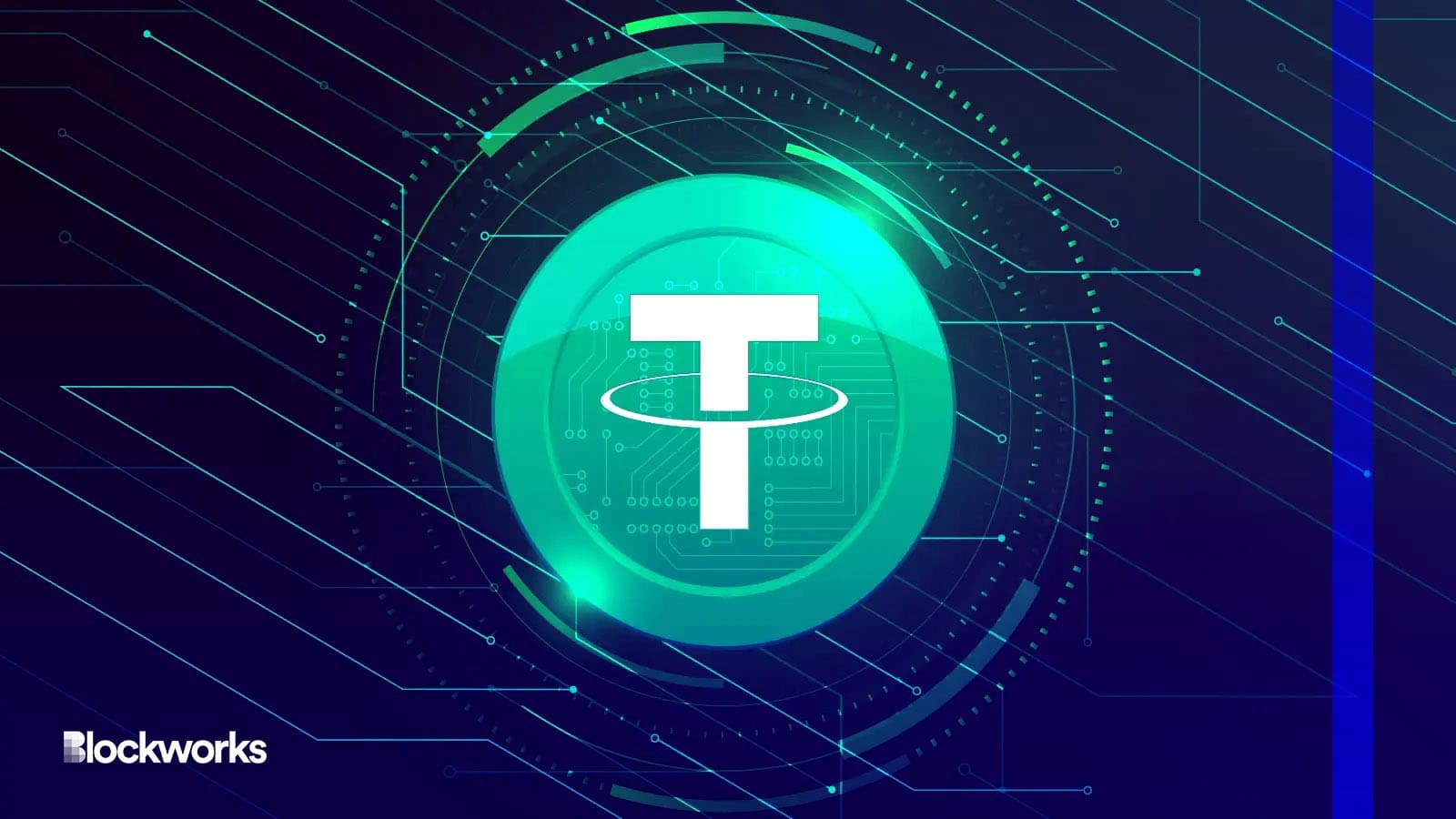Growth of Tether Supply ‘Positive’ Indicator for Further Crypto Gains
Analysts say USDT growth resembles similar periods in 2019 and 2020 which coincided with bitcoin bull markets

Source: Shutterstock / WindAwake, modified by Blockworks
The supply of leading stablecoin tether has clawed back recent losses to reach two-month highs as speculation of this year’s market rally continues to drive digital assets further.
USDT witnessed a 3.8% increase in market capitalization from a Nov. 27 low of $65.3 billion to $67.8 billion on Sunday — its highest point since the collapse of FTX led the market lower.
The asset, whose value is pegged one-to-one to the US dollar, is the industry’s most widely used stablecoin, eclipsing rivals USDC and Binance’s BUSD.
Data compiled by NYDIG across the previous 30 days show USDT has facilitated more than $980 billion in exchange trading volume, compared to BUSD’s $323 billion and USDC’s $135 billion.
The tech and financial services firm points to an increase in the stablecoin’s supply as evidence of a capital flow boost into the market and a positive sign based on prior events.
“We think the continued growth of Tether supply is a positive indicator for the continued price rally,” the firm said in a Friday newsletter.
The supply growth resembles 2019’s recovery which coincided with another rally for bitcoin whose price jumped from $3,250 to more than $13,000 before retracing in the second half of that year.
That was also true with the lead-up to the industry’s most recent bull run, where the stablecoin’s supply ballooned 100% from August 2020 through to January 2021 alongside a 130% increase in bitcoin’s price.
Though not all are convinced the appreciation in USDT’s supply is closely correlated.
“We have definitely seen an elevated interest in digital asset accumulation as well as transaction flows in stablecoins recently,” William Fong, Treasurer at Australian trading firm Zerocap told Blockworks. “However, we cannot be sure if it’s directly related to USDT supply movement or is really simply a risk adjustment on macroeconomic events.”
More likely catalysts are the several central bank policy meetings this week, including a potential reduction in the pace of tightening from the US Federal Reserve, Fong said.
BUSD, the industry’s third-largest stablecoin, has been unable to keep up the pace. Binance’s stablecoin supply has instead fallen 27% from $21.8 billion on Dec. 13 to $15.7 billion.
Pressure on BUSD was exacerbated, in part, due to the outflows from the token’s native exchange in mid-December and those pairings facilitating traders exiting the platform.
A general drop in the confidence of the Binance brand following Mazer’s decision to halt its auditing services of the exchange’s assets only strengthened the stablecoin’s decline in the fourth quarter of last year.
Tether has failed to deliver on years-long promises to engage an accounting firm for an audit of its own reserves.
USDC, the industry’s second-largest, has fared better — down about 4.6% from $45.1 billion to 43 billion over the same period.
Get the news in your inbox. Explore Blockworks newsletters:
- The Breakdown: Decoding crypto and the markets. Daily.
- 0xResearch: Alpha in your inbox. Think like an analyst.






